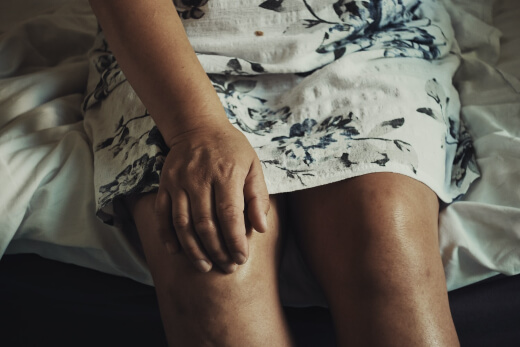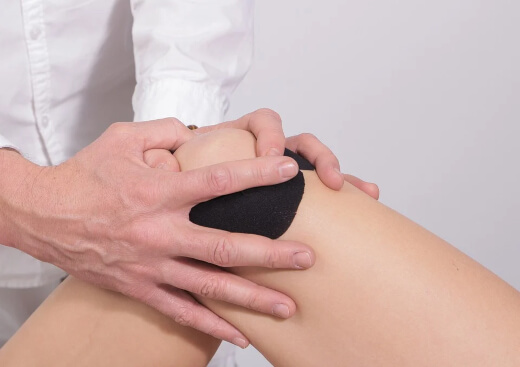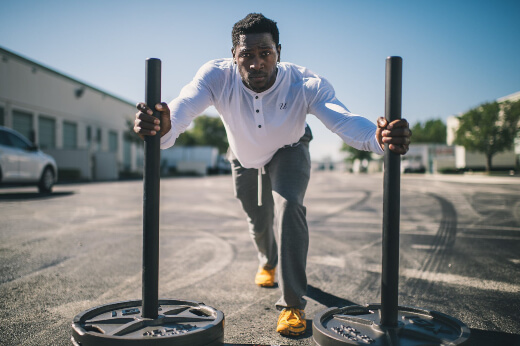The knee receives a lot of use every day. It is the largest joint in the body that is necessary for walking, running, jumping and climbing.
Due to constant use, the ligaments of the knee are susceptible to injury. If you are experiencing knee pain, your doctor may advise you to strengthen the knee with physical therapy.

Ligaments of the Knee
There are 4 main ligaments of the knee. Ligaments provide strength and stability to the knee. They are elastic bands that attach the bones together.
4 Main Knee Ligaments:
Anterior cruciate ligament (ACL)
ACL injuries are the most common types of knee injuries. The ACL is found in the center of the knee. It connects the shinbone to the thighbone. It is one of the main stabilising ligaments that controls rotation and forward movement of the shin bone. When the anterior cruciate ligament is severely injured, it often requires surgery to regain full function.
Posterior cruciate ligament (PCL)
The PCL is located at the back of the knee. It connects the shinbone to the thighbone. It works in conjunction with the ACL. However, it isn’t injured as easily as the ACL. When the Posterior cruciate ligament is injured you may notice a feeling of instability and pain.
Medial collateral ligament (MCL)
The MCL is located along the inner knee. It connects the shinbone to the thighbone. It provides stability to the inner knee. It works with the Lateral collateral ligament to hold the knee in place. The medial collateral ligament is often injured when the outside of the knee experiences a collision, pushing the knee sideways.
Lateral collateral ligament (LCL)
The LCL is located along the outer knee. It connects the shinbone to the thighbone. It provides stability to the outer knee. It works with the medial collateral ligament to hold the knee in place. The lateral collateral ligament is typically injured when the inside of the knee experiences a direct force.
Diagnosis of Knee Ligament Injury
Your doctor may be able to diagnosis your knee injury with a physical examination. However, other diagnostic procedures may be required.
- X-ray
- Magnetic resonance imaging (MRI)
- Arthroscopy
- Ultrasound
- Computerized tomography (CT) scan

How to Treat Injuries to Ligaments of the Knee
Treatment of ligaments of the knee will vary. Treatment will depend on the ligament injured and the severity of the injury. Your doctor will determine what treatment is needed to treat your specific injury.
Determining factors of treatment:
- Age
- Medical history
- Overall health
- Severity of injury
- Tolerance level to medications
- Ability to tolerate therapy
- Healing time
Treatments for injuries to ligaments of the knee:
- Non-steroidal Anti-inflammatory Medications
- Ice Therapy
- Knee Brace
- Physical Therapy
- Surgery
- Keep weight off the knee
- Use crutches
Recovery from a Knee Injury
Recovery depends on the person and the severity of the injury. A simple sprain may only take a couple of weeks to heal. While an injury requiring surgery can take several months to a year.
By following your doctor’s instructions, you can speed up your recovery process. Your doctor will often advise you to rest and stay off your feet. They may also prescribe physical therapy to get your knee healthy and strong.

How to Strengthen the Knee
Exercise is the best way to strengthen the knee. It is often recommended instead of surgery. Strengthening the muscles will help support the knee and prevent future injuries.
Exercising the knee doesn’t only help the knee; it strengthens the leg muscles as well. Strong leg muscles can relieve pressure on the knees aiding in the prevention of strain and injury.
Before starting an exercise routine, you should speak to your doctor. If you experience any pain, stop immediately.
Exercises to Strengthen the Knee:
- Leg Lifts
- Hamstring Curls
- Step Exercises
- Chair Dips
- Squats
- Lunges
- Calf Raises
- Hip Bridge
What Causes Knee Ligament Injuries
Anyone of any age can experience a knee injury. Injuries can happen from sports, running to turning your leg the wrong way. To help prevent an injury, it is important that you incorporate preventative measures.
How to prevent knee injuries:
- Keep a healthy weight
- Wear the right shoes
- Warm up before exercising
- Cool down after exercising
- Do low-impact exercises
- Avoid kneeling
- Incorporate knee strengthening exercises
- Keep a strong core and glutes
Book an Appointment Today
Exercise rehabilitation gives us the ability to treat each client differently. Our exercise physiologists will develop a personalised plan that will help you heal your knee and make it stronger.
Exercise rehabilitation is often overlooked by patients. However, it is necessary for a full recovery. If you are experiencing pain in your ligaments of the knee, and need and exercise rehabilitation, contact one of our Sydney Sports and Exercise Physiology locations today.
